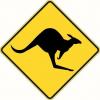Yep, IIRC their top 2 were that General finish and the Hydrocote one I suggested, though I'd forgotten about that article when I wrote my earlier posts. Minwax Polycrylic didn't fare so well.
EDIT: I just went back and looked at that article, and remembered why I didn't recommend the General finish: They scored the color as "light yellow" vs "clear" for Hydrocote Resisthane and Minwax Polycrylic. I've never used that General finish, though, and the difference may be trivial.





 Reply With Quote
Reply With Quote



